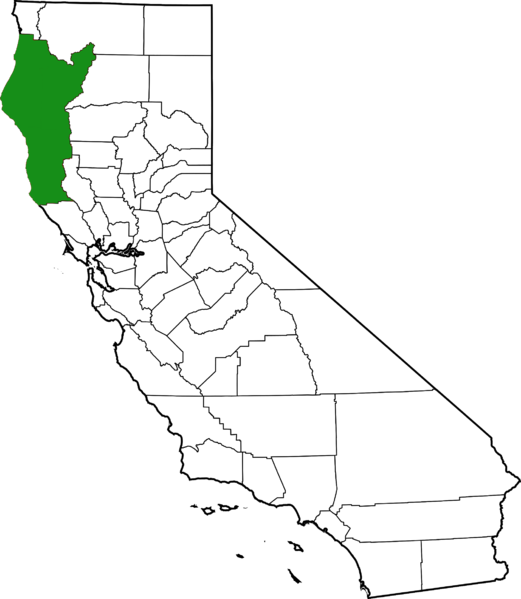It’s been said that the road to hell is paved with good intentions. This may explain why some of California’s cannabis cultivators — particularly those independent farmers grandfathered into the industry by generations of unregulated cultivation pioneers — have come to regret voting for full legalization.
Our story centers on the Emerald Triangle, a fertile cannabis haven at the intersection of Humboldt, Mendocino, and Trinity Counties. For the better part of 40 years, Emerald Triangle cultivators mastered their craft and supplied a thriving black market in the clandestine safety of a sequestered “back-to-land” counterculture. The region became the largest producer in the country and earned a reputation for some of the highest quality cannabis in the world.
So, what happened when California voted to legalize adult use cannabis in 2016? According to The New Yorker, legalization generated for these farmers “not only an economic crisis but also an existential one.”
The Emerald Triangle. ©O’Dea at Wikimedia Commons, CC By-SA 4.0.
Research has indicated that small farms are “more productive, more efficient, and able to contribute more to economic development than large farms.” [1] Proposition 64, California’s adult-use legalization initiative, included a number of protections for small famers, such as a restriction against large cultivation licenses during the first five years of legality. But there’s a loophole: small licenses are unlimited, which has led to massive stacking by major corporations. In other words, a handful of companies own hundreds of small-scale cultivation licenses.
The family farmers of the Emerald Triangle, on the other hand, have struggled to come up with the extensive fees to maintain any licensure whatsoever. Politico interviewed one such farmer, Thomas Mulder, in 2019. Just to stay afloat in the post-legalization market, Mulder reported burning through an $80,000 retirement fund and dipping into his children’s college funds. Other small cultivators — including growers with decades of experience — have been forced out the business completely. Frenchy Cannoli, an artisanal hashish master who partners with Emerald Triangle farmers, offers a visceral glimpse in his docu-series Frenchy Dreams of Hashish.
“In effect, legal marijuana is doing what the DEA’s war on drugs never managed to accomplish,” Politico reported.
The practical repercussions of shutting out small farmers are catastrophic. As of 2019, it was estimated that 80% of cannabis sales in California were still from the black market, significantly reducing projected market growth and creating an uncertain future for the state’s regulated program.
Incidentally, roughly 20,000–30,000 cannabis cultivators were estimated to operate in the Emerald Triangle pre-legalization. As of 2019, about 1,000 possessed a license.
The black market in California is even referred to as the “traditional market.”
On the bright side, savvy distributors have begun targeting the Emerald Triangle’s decentralized farms for high-quality, reputed product. Pricing and market conditions appeared to be on an upswing for these veteran growers in late 2019. The executive director of the Humboldt County Growers Alliance, Terra Carver, admitted: “We’re not calling it a victory here, but we’re enjoying a moment in time where we’re seeing some returns that give us hope.”
Whether the situation facing small cannabis farmers is a result of growing pains or more serious institutional flaws that perpetuate inequality remains to be seen.
Reference
- Rosset P. “The Multiple Functions and Benefits of Small Farm Agriculture in the Context of Global Trade Negotiations.” Development, vol.43, 2000, pp.78-82. Journal Impact Factor = 5.763; Cited by = 159









